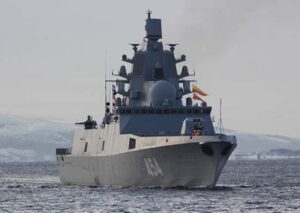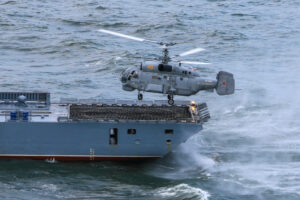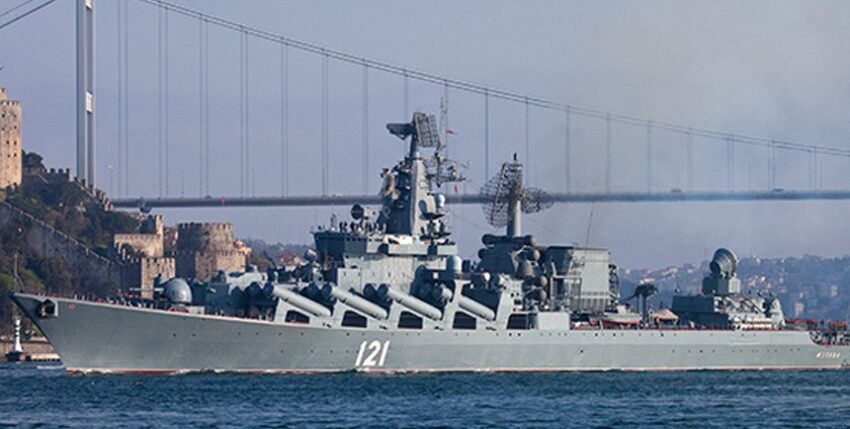With its increased naval presence in the Black Sea, Russia now almost completely surrounds Ukraine, including the previously existing gap in the south. What do these increased naval movements mean? Are they related to the Ukraine crisis? To get a picture of the situation, it is worth taking a look at announcements made by the Ministry of Defence of the Russian Federation, for example via the Internet and Twitter.
Moscow's global naval ballet

The Russian news agency Tass reported on 20 January, citing the Moscow Ministry of Defence, that the Russian Navy will conduct a series of naval exercises in all 'areas of responsibility of the fleets' in January and February. The exercises are related to the training plan for the Armed Forces of the Russian Federation for 2022, which was finalised during a collegial meeting of the Defence Council in the presence of the Commander-in-Chief, President Vladimir Putin, in December 2021. The naval exercises scheduled in all sea areas worldwide, including the Arctic, will be led by the Commander-in-Chief of the Navy, Admiral Nikolai Anatolyevich Yevmenov. According to him, it is planned that more than 140 warships and auxiliary vessels, more than 60 aircraft and a total of around 10,000 men will take part. Including the logistical and ground support units of the navy and the coastal defence forces, around 1,000 units will be deployed.

Is this just a rather coincidental coincidence with the intensification of the Ukraine crisis? Or is this exactly what was intended? The leadership of the Russian armed forces has a keen understanding of staging. The Black Sea serves as a suitable stage set for this. Since the end of the Cold War, the region has become a strategic zone in Europe, on the edges of which several conflicts have been fought out militarily. It became the scene of the smouldering crisis over Crimea and the Donbass. Older conflicts such as those in Georgia, Nagorno-Karabakh and Moldova are currently on ice. The strategic role for Moscow is obvious: on the one hand, the Black Sea is the wet southern flank of Russia's own claimed foreland, which it needs to control. On the other hand, in order to have a say in the Mediterranean, Russia needs a benevolent Turkey that controls access there. This is one reason for the flirtations between Moscow and Ankara.
Russia will always lag behind the US presence in the Mediterranean - both quantitatively and qualitatively. A glance at the bases of the two world powers in the Mediterranean alone makes this clear. The Russian base in Tartus (Syria) cannot compete with the capabilities of the US Navy in Naples and Souda Bay (Crete).

According to the Moscow Ministry of Defence, the aim of the inter-army exercises that Russia has now scheduled is to "protect Russian territory and national interests on the world's oceans and to counter military threats to the Russian Federation from the sea". The navy explicitly refers to the involvement of the aerospace forces.
For long-time observers, announcements of large-scale exercises are nothing new. Manoeuvres such as "OKEAN", "ZAPAD 81", "Waffenbrüderschaft" (on a smaller scale) or "DRUŽBA" stood for Cold War scenarios.
Back in January, the Russian Northern Fleet began exercises to deal with "crisis situations in the Arctic Ocean region". It was officially announced that up to 30 ships and submarines of the Northern Fleet, 20 aircraft and the Arctic Expeditionary Corps were involved in the exercises. Even the Kirov-class battlecruiser "Pyotr Velikiy" was involved at times. The Udaloy-class destroyer "Severomorsk", the Admiral Gorshkov-class frigate "Admiral Flota Sovetskogo Soyuza Gorshkov" and the landing ship "Ivan Gren" were also involved.











One Response
Thank you very much for this interesting report!
Bernd Lehmann